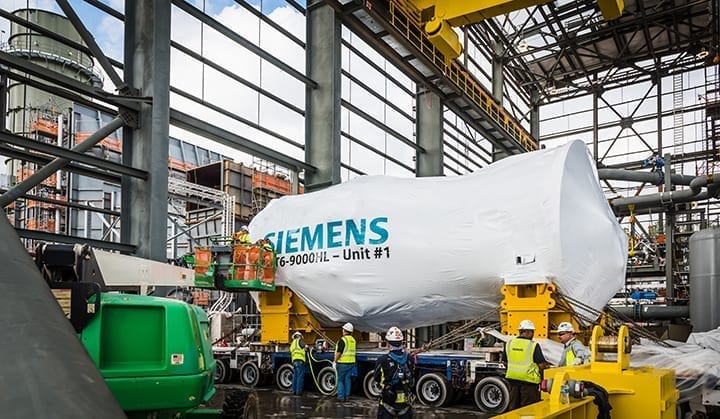World’s First HL-Class Gas Turbine Starts Successfully
The post World's First HL-Class Gas Turbine Starts Successfully appeared first on POWER Magazine.

Siemens Energy completed "first fire" at Duke Energy's Lincoln Combustion Turbine Station near Denver, North Carolina, on April 6. The accomplishment is a major milestone for the world's first SGT6-9000HL gas turbine, confirming the engine and auxiliary systems, including the gas supply, lube oil system, control system, and startup systems, all work as designed.
During first fire, which is the common industry term used for the initial time a gas turbine is started, the SGT6-9000HL was ramped up to a pre-determined test speed and systems were monitored for proper operation. Additional testing will ensue. After the first phase is completed, the unit will continue through a four-year testing plan (2020-2024), gradually introducing technologies to achieve the next level of efficiency, Siemens said.
The HL-class gas turbine was derived from proven Siemens H-class technology in what the company has called "an evolutionary development step." The HL's proven engine architecture is composed of an air-cooled four-stage power turbine, hydraulic clearance optimization for higher efficiency at full load while facilitating immediate restart, a service-friendly steel rotor design with Hirth serrations and a central single tie rod, and a can annular combustion system. The already-tested technologies in the next-generation design have allowed firing temperature to be increased, which improves efficiency.
The Siemens HL-class consists of three engines-SGT5-8000HL, SGT5-9000HL, and SGT6-9000HL-with gross capacities of about 481 MW, 593 MW, and 405 MW, respectively. The SGT6-9000HL combustion turbine was shipped to Duke Energy's Lincoln project site in November 2019 (Figure 1).
 1. Siemens delivered the generator and combustion turbine to the Lincoln site in May and November 2019, respectively. Construction is expected to be completed this year, followed by four years of extensive unit testing. Courtesy: Duke Energy
1. Siemens delivered the generator and combustion turbine to the Lincoln site in May and November 2019, respectively. Construction is expected to be completed this year, followed by four years of extensive unit testing. Courtesy: Duke EnergyThe Lincoln site is home to 16 previously installed natural gas-fueled simple-cycle combustion turbines, with a total capacity of 1,200 MW. Those units have been in service since 1995. The 746-acre site was considered ideal for expansion because of available land and access to existing transmission and natural gas connections.
Duke Energy and Siemens entered into the agreement for the Lincoln station expansion in June 2017. The North Carolina Utilities Commission approved the project in December 2017, and construction started in September 2018.
The new unit will operate in simple-cycle mode under real-world power plant conditions, allowing Siemens to continually assess and optimize the performance while gaining valuable commercial operating experience. Duke Energy customers will receive the unit's energy during the four-year testing period while only paying some fuel costs.
When all testing is completed in 2024, Siemens will turn over the advanced unit to Duke Energy. Duke Energy has said the unit will be the most efficient simple-cycle combustion turbine in its fleet. It can also start quickly, giving the company more flexibility to support its growing portfolio of solar generation. Investing in natural gas technology is also expected to help Duke Energy close coal plants faster and reach its goal of cutting carbon emissions by at least 50% by 2030.
-Aaron Larson is POWER's executive editor (@AaronL_Power, @POWERmagazine).
The post World's First HL-Class Gas Turbine Starts Successfully appeared first on POWER Magazine.